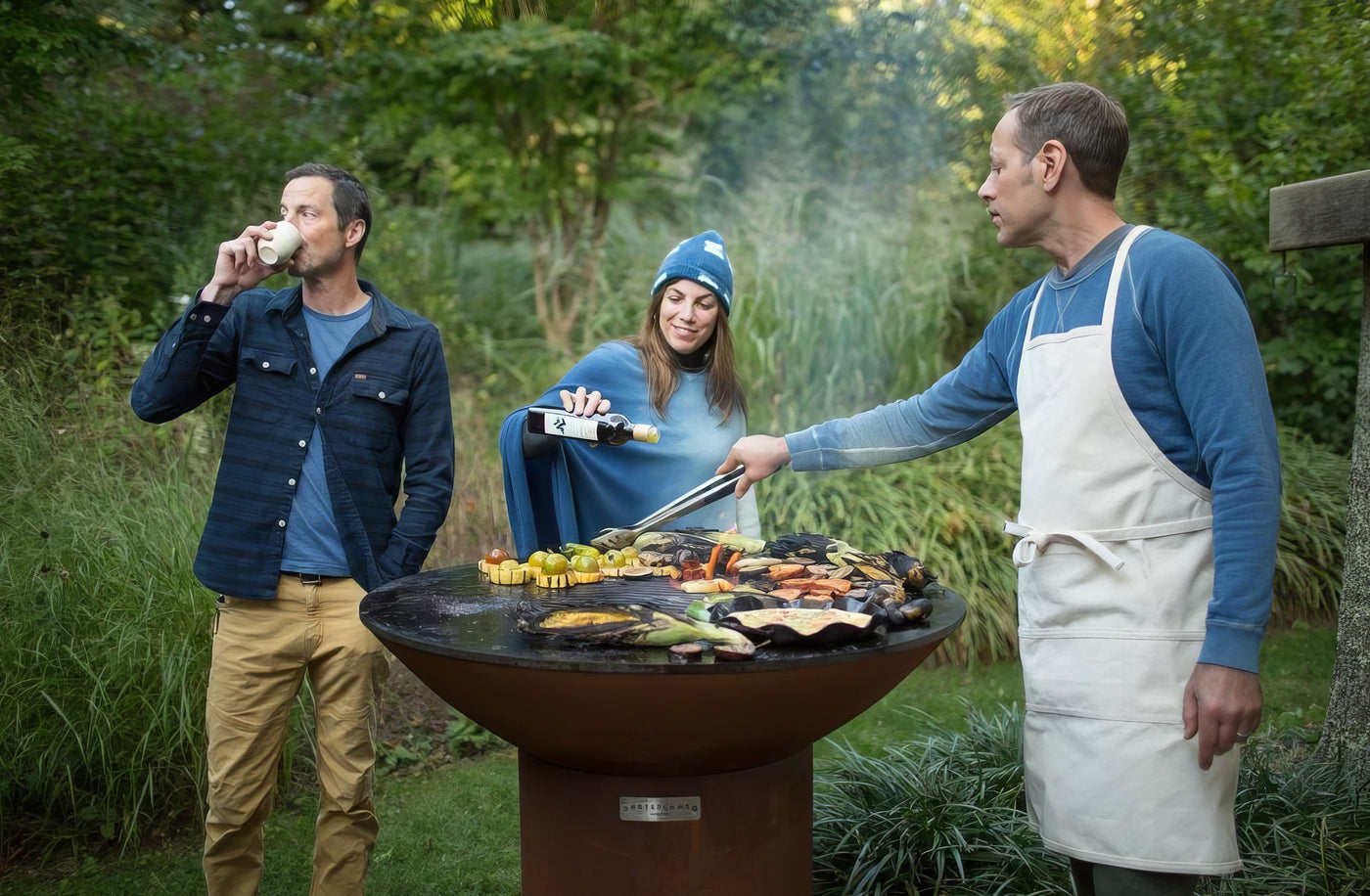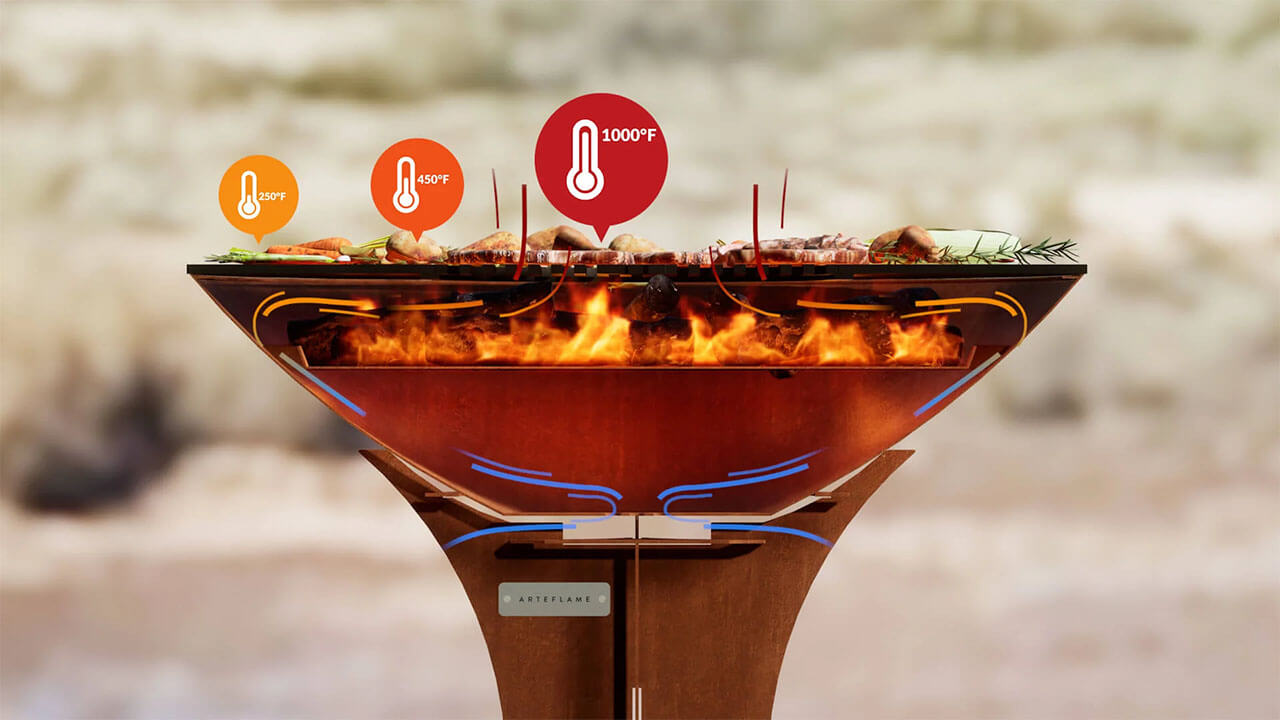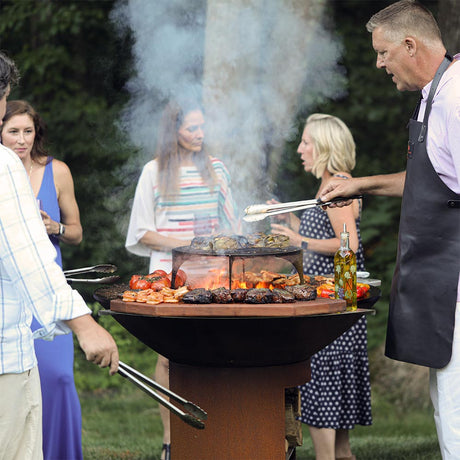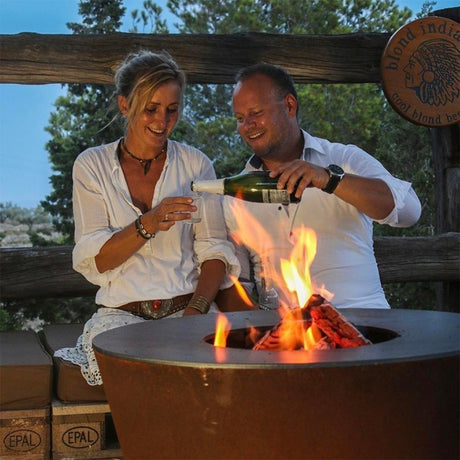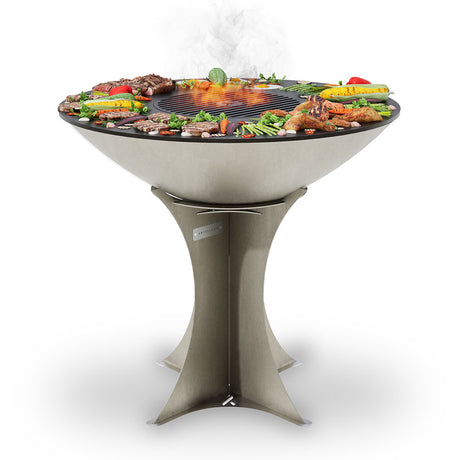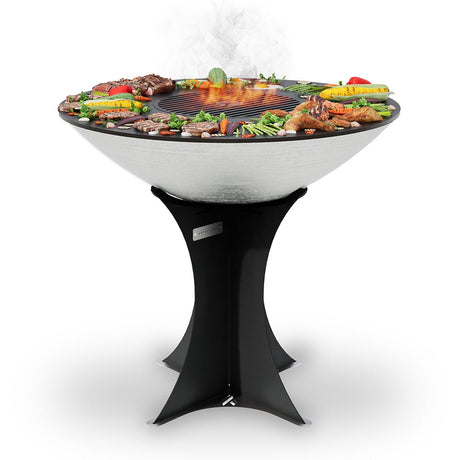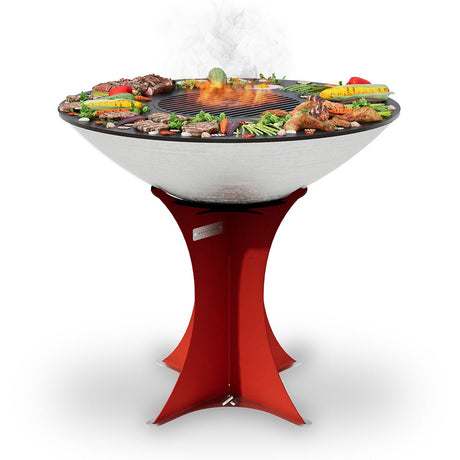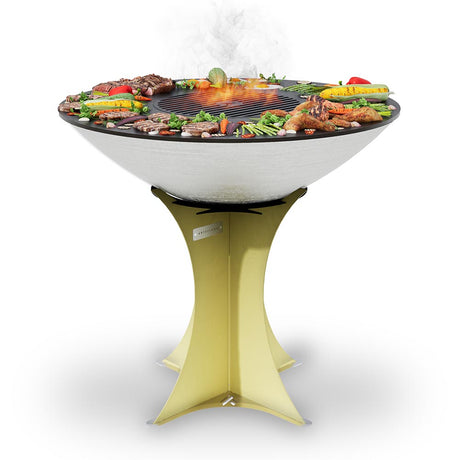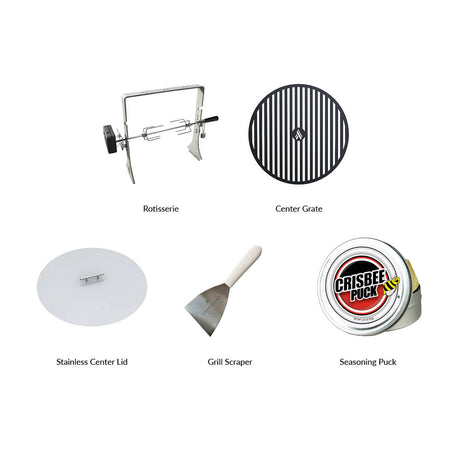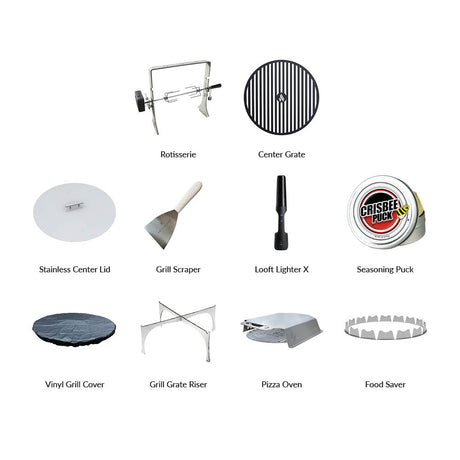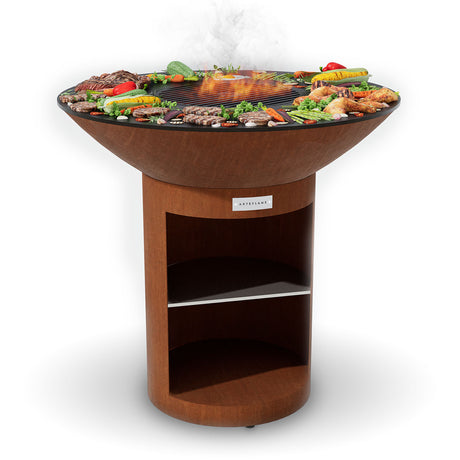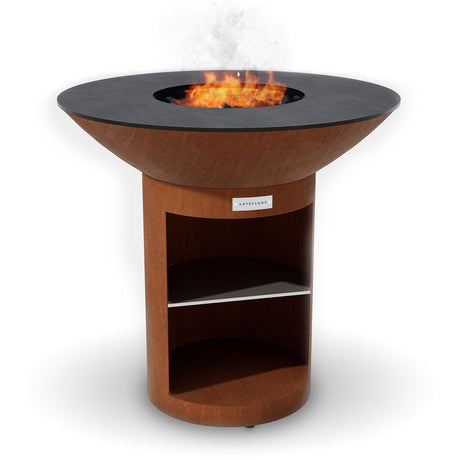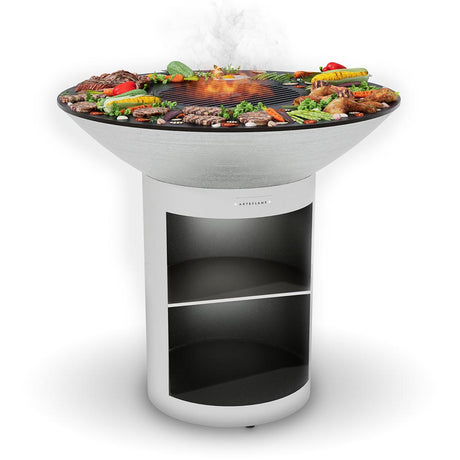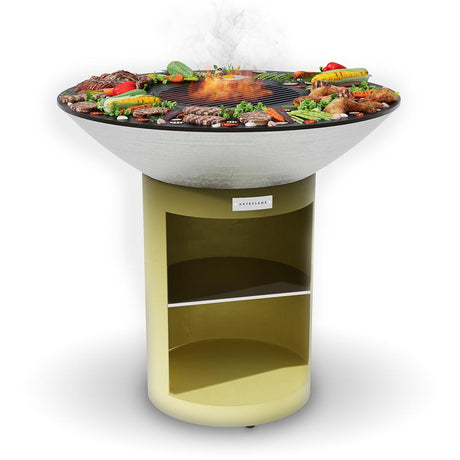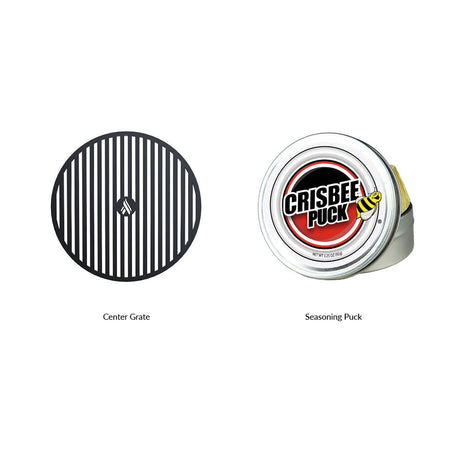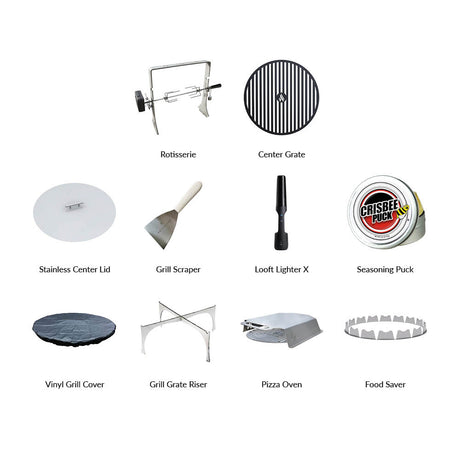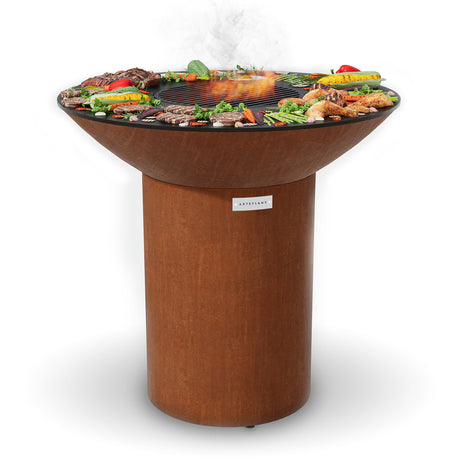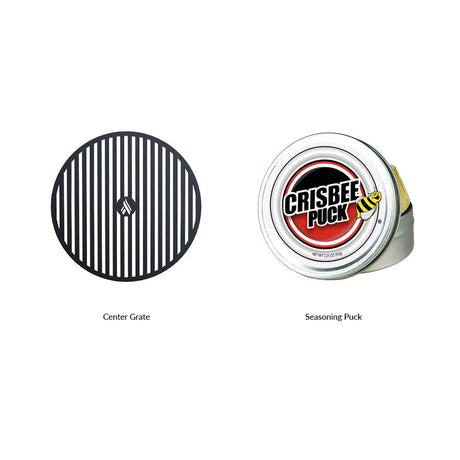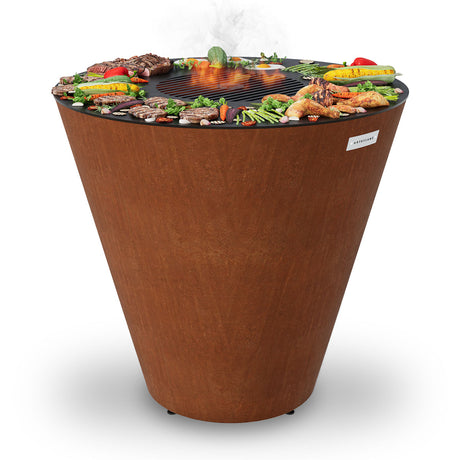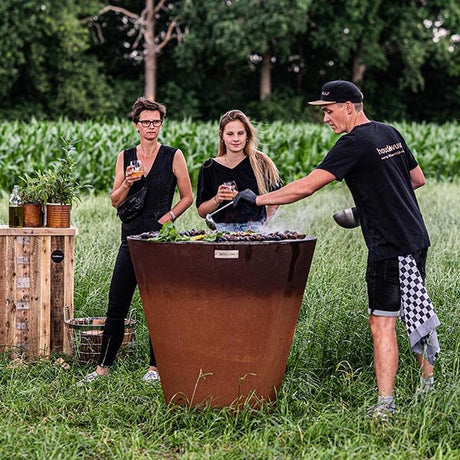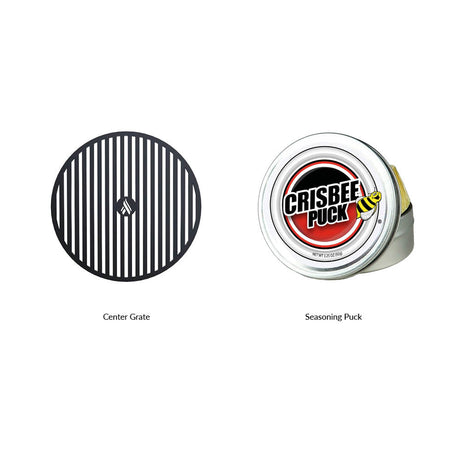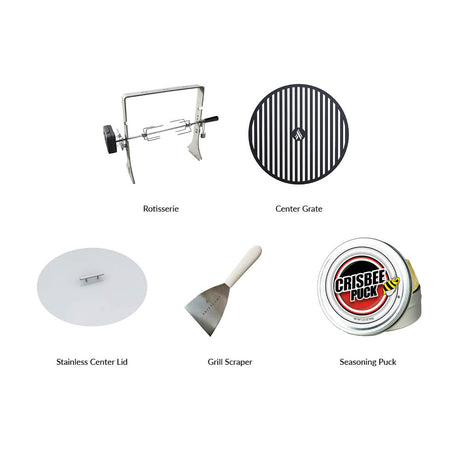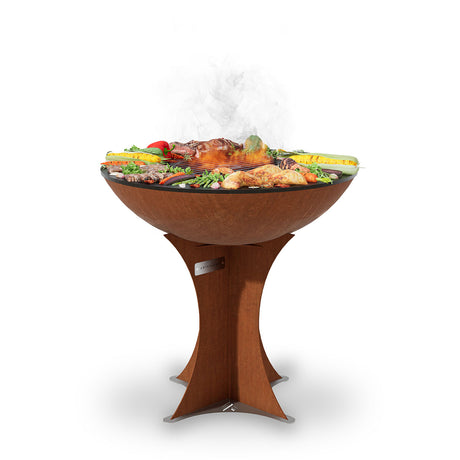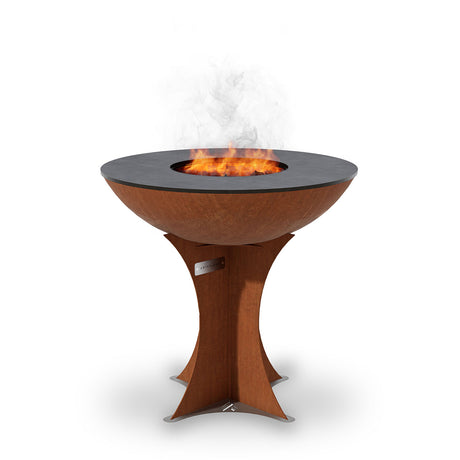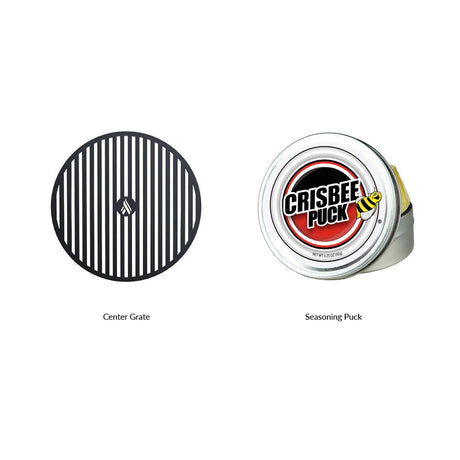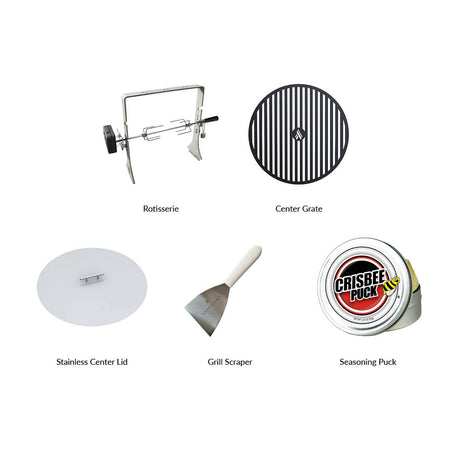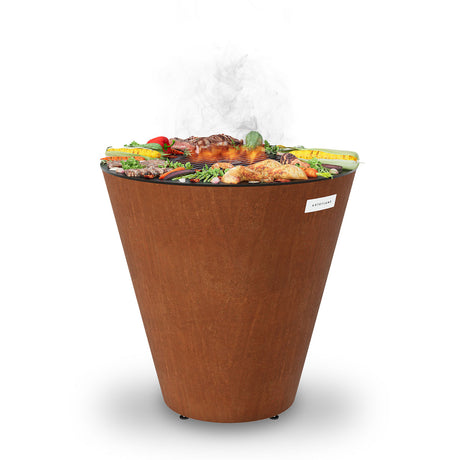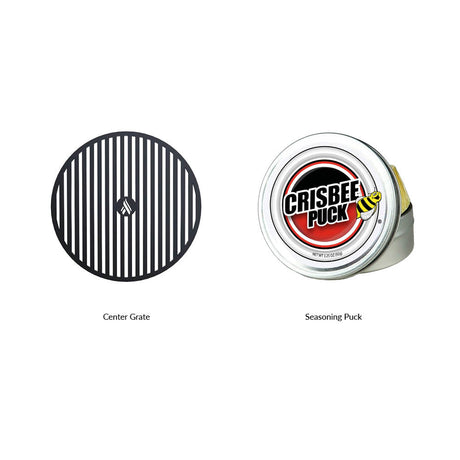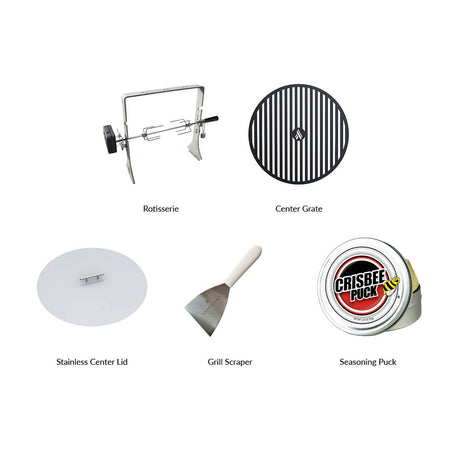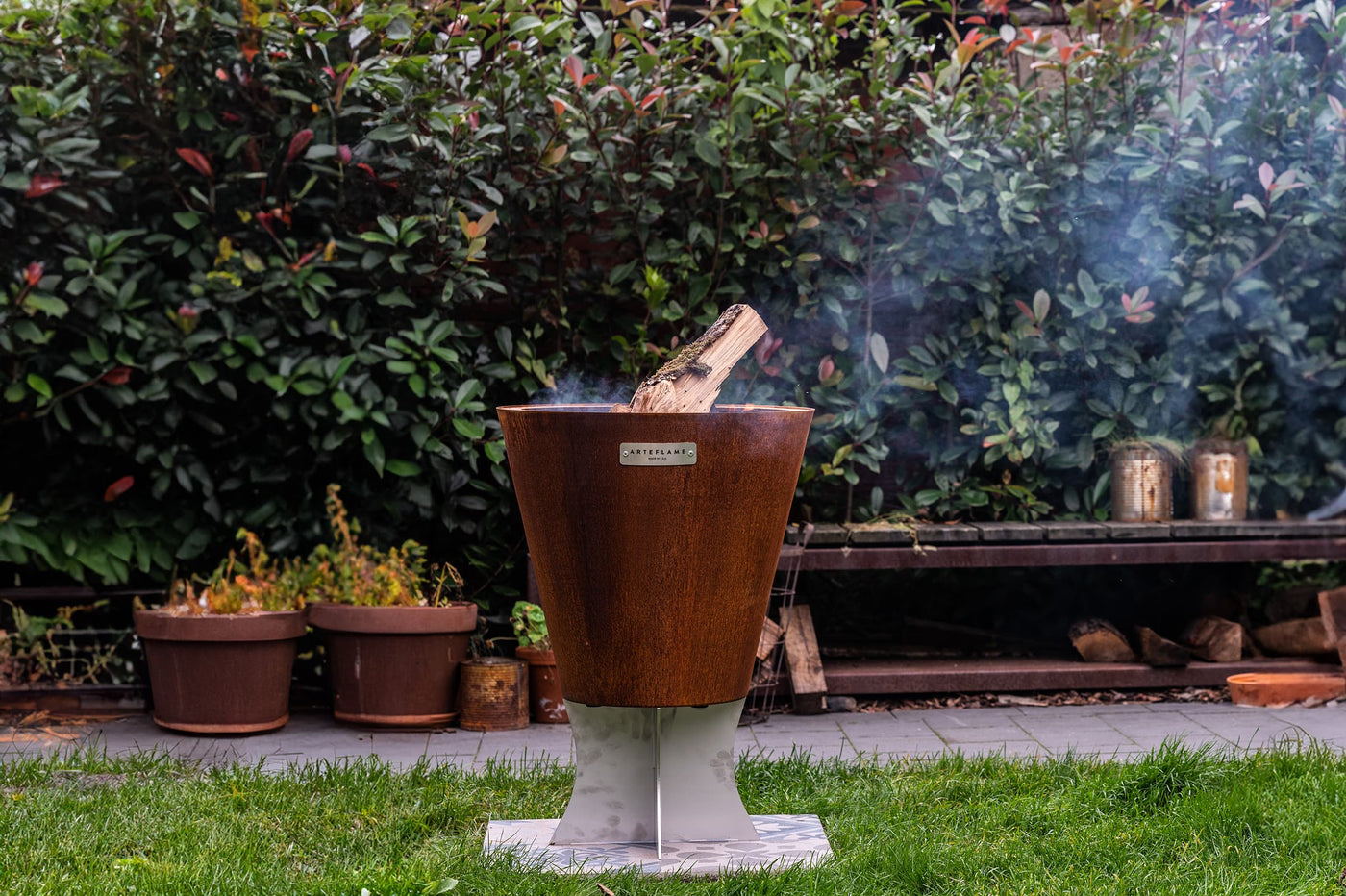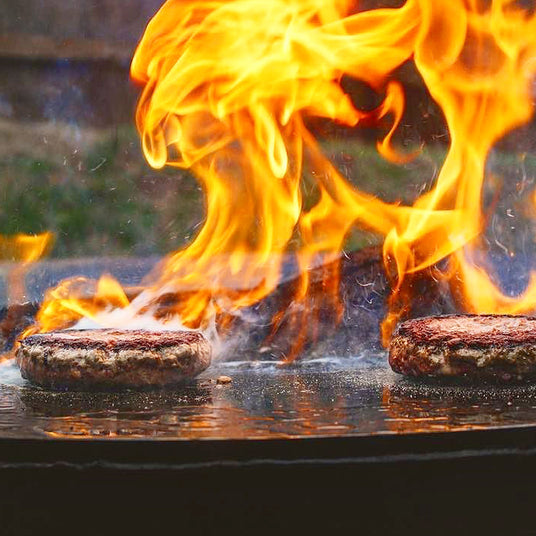
וואָס איינער איז בעסטער?
When it comes to selecting a grill, the first decision you'll need to make is whether to go a wood/charcoal grill or a gas grill. This choice is crucial as it will shape your entire grilling experience. To assist you in making an informed, let's dive into a comprehensive breakdown of the advantages and disadvantages of wood and gas grills. By understanding the benefits offered by each, you will be able to determine which one best suits your and preferences.
Wood grills elevate grilling to a whole new level by adding the most exceptional and tantalizing flavors. The use of wood or charcoal as fuel enhances the taste and aroma of your grilled food, taking it to a gourmet level. The smoky flavor imparted by wood grills is unmatched, giving your dishes a unique and memorable character. Additionally, wood grills offer greater control over the temperature, allowing you to achieve the perfect level of heat for different types of ingredients. This precision ensures that your food is cooked to perfection, guaranteeing an exquisite dining experience.
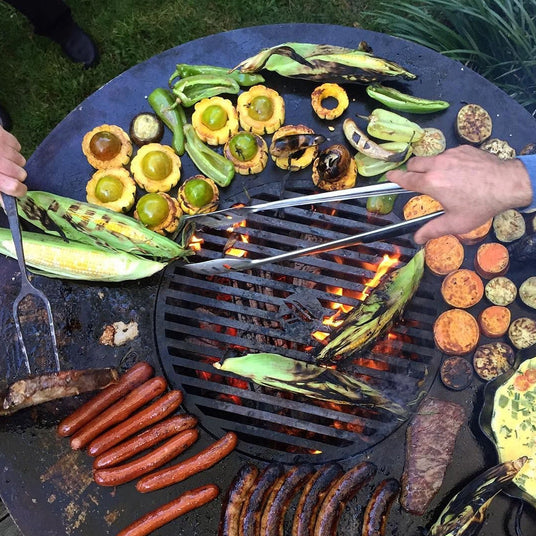
convenience and ease of use
On the other hand, gas grills provide convenience and ease of use. These grills come with adjustable burners that enable temperature control with a simple turn of a knob. Unlike wood grills, there's no need to wait for charcoal to ignite and reach the desired temperature. With a gas grill, you can start cooking immediately. Additionally, gas grills are easier to clean but do require much more maintenance compared to their wood counterparts. Arteflame grills use no valves, switches or gimmicks of any kind that can break.
To summarize, wood grills excel in the realm of flavor, infusing your food with an unrivaled smoky taste that delights the palate. The use of wood or charcoal provides much higher temperatures, ensuring perfect cooking results. On the other hand, gas grills offer convenience.
Armed with a thorough understanding of the benefits associated with both wood and gas grills, you're now equipped to make an informed decision. Consider your personal preferences, cooking style, and the overall grilling experience you desire. Ultimately, the choice between wood/charcoal and gas grills will depend on your specific needs and desires.

גאַז געשמאַק קעגן האָלץ פייער געשמאַק
זענט איר מיד פון קאַמפּראַמייזינג די טאַם פון דיין גרילד עסנוואַרג? קוק ניט ווייַטער! די לייזונג צו דיין פּראָבלעם ליגט אין אַפּט פֿאַר אַ האָלץ-פייערד גרילל. עס איז צייט צו נעמען דיין גריל דערפאַרונג צו דער ווייַטער מדרגה און נאָכגעבן די מעהודערדיק געשמאַק אַז בלויז אַ האָלץ-פייערד גריל קענען צושטעלן.
זאל ס זיין ערלעך, די ערשטיק סיבה וואָס מענטשן בעסער גרילינג איבער אנדערע קוקינג מעטהאָדס איז די אַנביטאַבאַל טאַם עס ימפּאַרץ צו די עסנוואַרג. און ווען עס קומט צו טאַם, גרילינג מיט האָלץ איז אין אַ ליגע פון זיך. די יינציק טעם וואָס אַ האָלץ-פייערד גרילל מוסיף צו דיין עסנוואַרג פשוט קענען ניט זיין רעפּליקייטיד אנדערש.
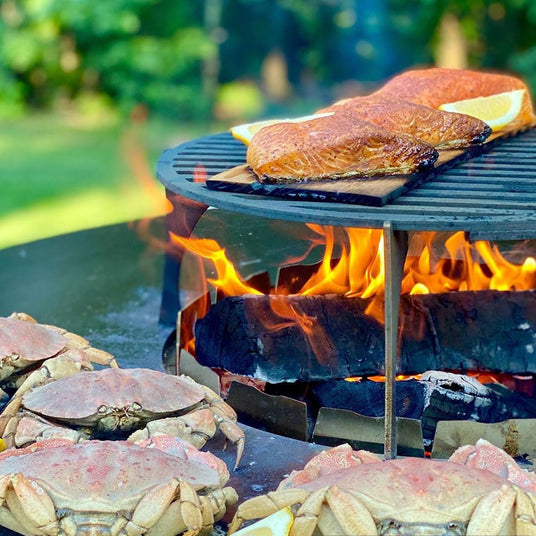
taste of wood-fired grilled food
But why is the taste of wood-fired grilled food so exceptional? There are two key elements at play here: searing and smoke flavor. Searing locks in the juices and creates a mouthwatering caramelized crust on your food, enhancing its flavor and texture. And let's not forget about the unmistakable aroma of smoke that infuses your food, giving it that irresistible smoky flavor that you crave.
Now, let's talk about gas grills for a moment. It's important to note that the gas used in your grill is the same gas that powers city buses. Just think about it. Grilling on gas means your food is being exposed to the same fumes as a city bus exhaust! Do you really want that unpleasant smell lingering on your food? We're guessing not.
So, if you're serious about taking your grilling game to the next level and indulging in the lovely taste of wood-fired grilled food, it's time to make the switch. Say goodbye to compromise and hello to flavor perfection. Get yourself a wood-fired grill today and ignite a world of culinary possibilities. Your taste buds will thank you!
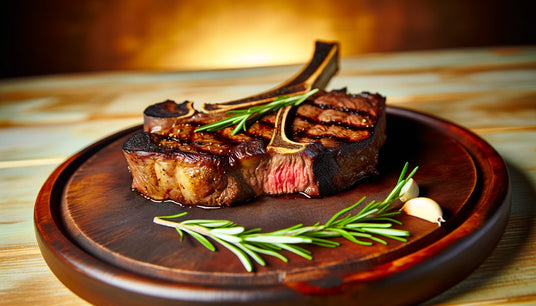
WHY IS A GREAT SEAR IMPORTANT?
When proteins and carbohydrates (sugars) are heated together, the Maillard reaction occurs, which is essential for developing rich and complex flavors in food.
Steakhouses sear over wood at 1,000°F to properly sear the food and enhance its flavor. Arteflame Grills excel at reaching these high temperatures and are perfect for achieving that coveted sear. The intense heat generated by wood or charcoal creates a beautifully caramelized crust on the food, resulting in a more enjoyable dining experience.
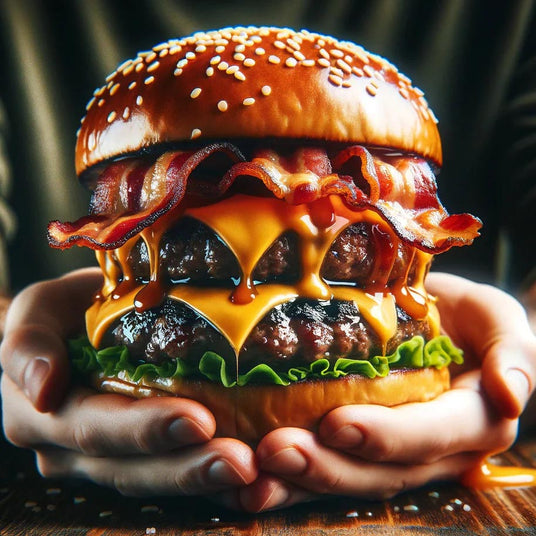
gas grills heat food indirectly
Gas grills heat food indirectly and are not well-suited for proper searing as they typically don't reach the high temperatures required. Although some high-end gas grills have sear burners, they are often small and limited in their capacity.
For those looking to truly indulge in the taste of barbecued food, charcoal and wood grills are the superior choice. The combination of their intense heat and the Maillard reaction guarantees a more flavorful and satisfying meal. So, if taste is your priority, opting for a charcoal or wood-fired grill is the way to go.
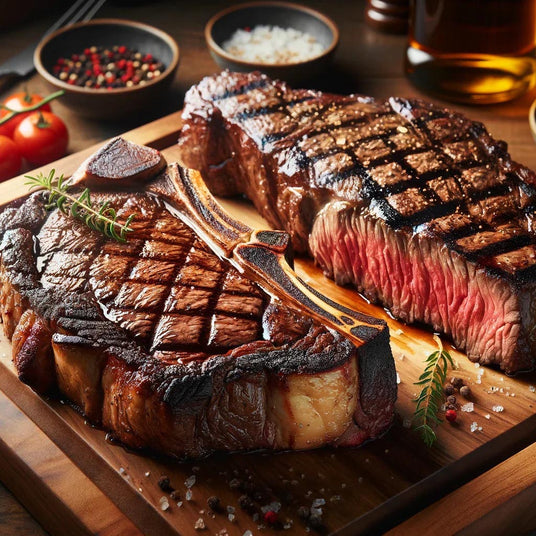
דער שליסל צו גרויס סטייקס
ווען עס קומט צו דערגרייכן די שליימעסדיק שערן אויף מיץ, עס איז וויכטיק צו פֿאַרשטיין די לימיטיישאַנז פון רובֿ גאַז גרילז. בשעת די גרילז קענען אַוואַדע "ברוין" די ייבערפלאַך פון דיין עסנוואַרג, זיי אָפט געראַנגל צו דערגרייכן די הויך טעמפּעראַטורעס פארלאנגט פֿאַר אָפּטימאַל סירינג.
דער פּראָצעס פון בראַונינג, באקאנט ווי די מאַילאַרד אָפּרוף, הייבט אַרום 350 ° F. אָבער, צו טאַקע דערגרייכן די בעסטער רעזולטאַטן, די טעמפּעראַטור דאַרף יקסיד 500 ° F. צום באַדויערן, גרילינג אין אַ נידעריקער טעמפּעראַטור רעזולטאטן אין יבעריק קוקינג פון די ינלענדיש פון די פלייש, ווייַל די בראַונינג פּראָצעס נעמט צו לאַנג צו פאַלן.
וואָס סעאַרינג באַזונדער פון פּשוט בראַונינג איז די ייבערפלאַך דיכיידריישאַן און קריספּנאַס עס ימפּאַרץ אויף די עסנוואַרג. דעם קריייץ אַ דיזייראַבאַל קאַנטראַסט אין געוועב צווישן די ויסווייניקסט סקאָרינקע און די ווייך ינלענדיש. סטייקכאַוסיז סיר זייער עסנוואַרג בייַ 1,000 ° F; אויב איר ווילן סטעאַקהאָוסע קוואַליטעט, איר דאַרפֿן סטעאַקאָוסע טעמפּעראַטורעס.

דערגרייכן טעמפּעראַטורעס איבער 1,000 ° F
ווען עס קומט צו סירינג, אַ האָלצקוילן אָדער האָלץ-פייערד גרילל איז יקערדיק. ווייניק גרילז קענען דערגרייכן טעמפּעראַטורעס איבער 1,000 ° F, פּראַוויידינג די טיף היץ נייטיק פֿאַר דערגרייכן דעם קאַוואַטיד סיר.
אויב איר זוכט פֿאַר אַ ווערסאַטאַל גרילל וואָס סירז ביי הויך טעמפּעראַטורעס און גיט די קאַנוויניאַנס און יז פון אַ גאַז גרילל, קוק ניט ווייַטער ווי די אַרטעפלאַמע. דעם ינאַווייטיוו גרילל קאַמביינז די בעסטער פון ביידע וועלטן, און דערגרייכן סטעאַקהאָוסע סירינג טעמפּעראַטורעס וואָס יקסידז אפילו די פון טראדיציאנעלן האָלצקוילן גרילז.
אַזוי, בשעת רובֿ גאַז גרילז זענען טויגעוודיק פון בראַונינג עסנוואַרג, ריטשינג די טעמפּעראַטורעס פארלאנגט פֿאַר געהעריק סירינג איז אַ אַרויסרופן. פֿאַר יענע וואָס זוכן די לעצט סירינג דערפאַרונג, אַ האָלצקוילן אָדער האָלץ-פייערד גרילל איז רעקאַמענדיד.
Arteflame XXL 40" Grills
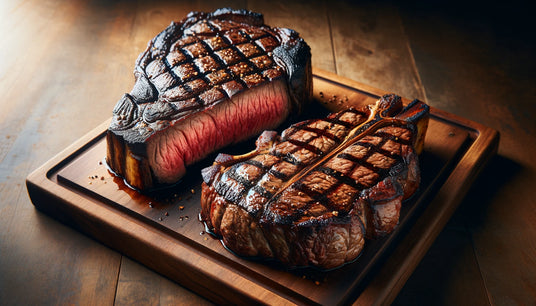
HIGH TEMPERATURE SEARING
FOR STEAKHOUSE QUALITY STEAKS
Steak aficionados, listen up! When it comes to achieving that perfect sear on your favorite cut of meat, the choice of equipment is vital. Steak restaurants rely on gas broilers capable of reaching scorching temperatures of 800°F - 1200°F or, even better, grill over a wood fire at these same temperatures.
To truly replicate the mouthwatering sear commonly found in steakhouses, it is essential to ensure that your gas grill can reach a minimum temperature of 800°F++. However, it's important to note that gas grills meeting these temperature criteria are relatively rare.
In contrast, Arteflame grills are known for their ability to generate intense heat, exceeding 1,000°F. These high temperatures are precisely what you need to create that sought-after edge-to-edge sear on your steak. So, if achieving a seared masterpiece is your goal, an Arteflame grill may be the ideal choice for you.
Remember, when it comes to grilling perfection, don't settle for anything less than the optimal temperature range. Whether you opt for a gas grill that can reach these high temperatures or choose the reliability of an Arteflame, the key is to ensure that your grilling equipment can deliver the intense heat required for a flawlessly seared steak.

SEARING VS BROWNING,
WHAT'S THE DIFFERENCE?
Browning is a culinary technique that holds immense power when used correctly. However, it must be approached with precision and care to ensure the desired results. Striking the perfect balance between achieving a beautifully browned exterior while avoiding overcooking requires a deep understanding of the culinary arts.
When it comes to browning meats, the Arteflame reigns supreme. Its ability to generate intense heat allows for the quick searing of the surface, creating a delectable crust. This method is particularly suitable for tender cuts such as steaks and chops, as it guarantees a perfect balance of browning and maintaining the desired temperature within, resulting in a succulent, mouthwatering dish.
Conversely, when dealing with tougher cuts like brisket, the reverse searing method proves to be invaluable. This technique involves a more cautious approach, employing low heat to gently raise the internal temperature of the meat before subjecting it to a fierce sear over high heat. With patience and precision, the reverse searing method ensures that every inch of the meat is infused with rich flavors, delivering a tender and succulent end result.
Mastering the art of browning is an endeavor that calls upon experience, expertise, and a keen understanding of the ingredients at hand. It is through this careful mastery that the true potential of flavors can be unlocked, elevating the dining experience to new heights. The controlled application of heat and the transformative effects it has on food are the fundamental pillars upon which the art of browning is built.
In conclusion, browning is an essential flavoring technique that demands skill and finesse. Whether it be the use of a charcoal grill to impart a tantalizing sear on steaks and chops, or the reverse searing method to transform tougher cuts into tender delicacies, the art of browning is an invaluable tool for any culinary enthusiast. Through practice and experience, one can unlock the potential of browning, unraveling a symphony of flavors and elevating any dish to a realm of unparalleled gustatory pleasure.
ARTEFLAME XL 30" GRILLS

פּרוּווט פאַרקערט זוכן
די שליימעסדיק ביפסטייק
די פאַרקערט סירינג אופֿן איז לאַנג שוין כעראַלדיד ווי אַ פול-פּראָאָף טעכניק צו דערגרייכן דילעקטאַבאַל, סאַקיאַלאַנט סטייקס מיט אַ ימפּעקקאַבלע סיר. דעם צוגאַנג טראגט אַ פּראַפעקט סיר פון די אַרויס מיט אַ בישליימעס האַלב ינלענדיש.
צו אָנהייבן די פאַרקערט סירינג נסיעה, עס איז קריטיש צו פֿאַרשטיין די פונדאַמענטאַל סטעפּס פון דעם פּראָצעס. די ערשטיק אָביעקטיוו איז צו באַקומען אַ שליימעסדיק סיר מער ווי 1,000 ° F ווי אַ סטייקכאַוס. נאָך איר האָבן די שליימעסדיק סיר, מאַך די ביפסטייק צו די פלאַך קאָאָקטאָפּ צו העכערן די ינערלעך טעמפּעראַטור פון די ביפסטייק צו דער געוואלט מדרגה, באַוווסטזיניק פון די פאַקט אַז עס וועט פאָרזעצן צו שטייַגן בשעת רעסטינג. ווי אַ גענעראַל גיידליינז, אויב דער ציל איז אַ מיטל-זעלטן ביפסטייק בייַ 135 ° F, אַראָפּנעמען די ביפסטייק פון די גריל בייַ 120 ° F.
די פאַרקערט סירינג אופֿן ברענגט די בעסטער אין סטייקס. דורך דיפייינג קאַנווענשאַנאַל חכמה, איינער קענען דערגרייכן אַ ביפסטייק וואָס איז סיימאַלטייניאַסלי ווייך, זאַפטיק און פלאָלאַסלי סעאַרד.

SOUS-VIDEO ערשטער,
גרילל רגע
פֿאַר אַטשיווינג די אָפּטימום צערטלעכקייַט און ידעאַל ינערלעך טעמפּעראַטור פון סטייקס, פילע יסטימד ביפסטייק רעסטראַנץ נוצן אַ קוקינג טעכניק גערופן סאָוס-ווידע. דאָס ינוואַלווז וואָרמינג די ביפסטייק אין אַ וואַקוום-געחתמעט זעקל אין אַ גענוי קאַנטראָולד טעמפּעראַטור פֿאַר עטלעכע שעה (4 שעה @ 131 ° F). דער רעזולטאַט? א סאַפטער און מער ווייך ביפסטייק וואָס איז זיכער צו ביטע אפילו די מערסט דיסערנינג גומען.
צו נעמען דיין ביפסטייק צו דער ווייַטער מדרגה און דערגרייכן דעם שפּיץ פון טאַם, באַטראַכטן פיוזינג די סאָוס-ווידע טעכניק מיט די אַנמיסטייקאַבאַל סמאָוקינאַס פון אַ האָלצקוילן גרילל. די קאָמבינאַציע וועט געבן דיין ביפסטייק אַ טאַנטאַליזינג סיר, קריייטינג אַ כאַרמאָוניאַס פאַרבאַנד פון דילעקטאַבאַל טעקסטשערז און פלייווערז.
נאָך דעם סאָוס-ווידע פּראָצעס, עס איז קריטיש צו קערפאַלי טרוקן די ביפסטייק. דעם שריט ינשורז די שליימעסדיק אַ פלאָלאַס סיר. די קריטיש עלעמענט אין דערגרייכן דעם געוואלט סיר איז דער אַוועק פון נעץ אויף די ייבערפלאַך פון די ביפסטייק. מויסטשער ינכיבאַץ די סירינג פּראָצעס, ימפּידינג די שאַפונג פון די קאַוואַטיד קעראַמאַלייזד סקאָרינקע.
צו דערגרייכן די שליימעסדיק שערן, עס איז רעקאַמענדיד צו נוצן אַ הויך-טעמפּעראַטור גריל באַשטעטיקן, יידילי ריטשינג טעמפּעראַטורעס פון 800 ° F אָדער העכער. דער הויך היץ איז ינסטרומענטאַל אין פאָרמירונג אַ דילעקטאַבלי טשערד יקסטיריער בשעת מיינטיינינג אַ סאַקיאַלאַנט מיטל-זעלטן ינלענדיש. דורך יקספּאָוזינג די ביפסטייק צו די טיף היץ פֿאַר אַ קורץ געדויער פון ביידע זייטן, איר ינשורז אַ ימפּעקקאַבלע סיר וואָס וועט הייבן דיין ביפסטייק.
די חתונה פון סאָוס-ווידע טענדעראַזיישאַן און אַ סקאָרטשינג גריל דיליווערז אַן אַנפּעראַלעלד ביפסטייק דערפאַרונג. געדענקט צו מאַטיקיאַלאַסלי באַזייַטיקן קיין נעץ פון די ביפסטייק ס ייבערפלאַך צו גאַראַנטירן אַן ימפּעקקאַבלע סיר. בלויז דעמאָלט איר וועט ופשליסן די פול פּאָטענציעל פון דיין ביפסטייק.
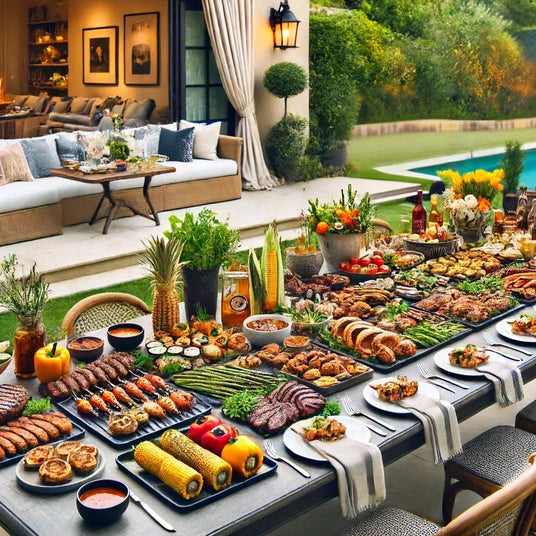
SMOKE FLAVOR AS SEASONING
Smoke adds a distinct flavor to food that can't be replicated. Porous foods, like bread, quickly absorb smoky flavors, and experimenting with different wood types that produce varied smoke flavor profiles is a charcoal grill advantage. Hickory, for instance, imparts a bold and rich flavor to steaks, while alder is perfect for salmon. Each wood type's unique characteristics, derived from components like lignin, contribute to its distinct smoke profile.
Charcoal is primarily carbon and doesn't produce much smoke by itself. The smoke in a charcoal grill comes from drippings (oils, grease, sauce, proteins) that fall onto the charcoal. These drippings do not give a good smokey flavor. To create specific smoke flavors, wood or wood chunks need to be added to the charcoal. Adding wood or wood chunks to a gas grill is challenging, and even with a "smoke box," the lid often doesn't seal well enough to trap the smoke for long, imparting minimal flavor.
The engineered airflow of the Arteflame accomplishes an almost complete burn but produces enough smoke to flavor your food. For more smoke flavor, add some fresh wood to the fire or simply use the optional grill grate riser to reduce the heat and put your food directly into the smoke stream for just the perfect amount of flavor.
